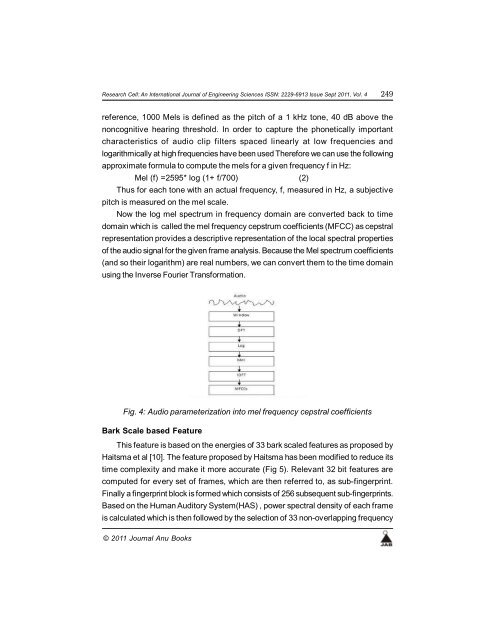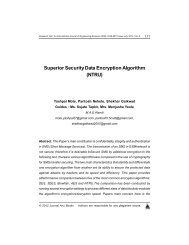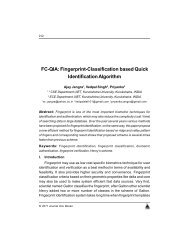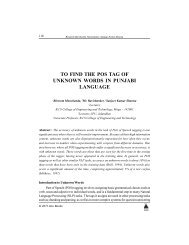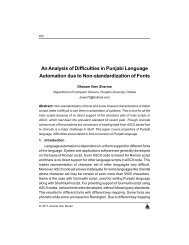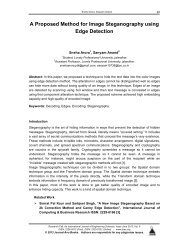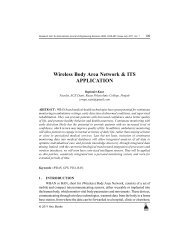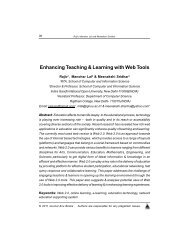Comparison and Implementation of Audio based ... - Ijoes.org
Comparison and Implementation of Audio based ... - Ijoes.org
Comparison and Implementation of Audio based ... - Ijoes.org
Create successful ePaper yourself
Turn your PDF publications into a flip-book with our unique Google optimized e-Paper software.
Research Cell: An International Journal <strong>of</strong> Engineering Sciences ISSN: 2229-6913 Issue Sept 2011, Vol. 4<br />
249<br />
reference, 1000 Mels is defined as the pitch <strong>of</strong> a 1 kHz tone, 40 dB above the<br />
noncognitive hearing threshold. In order to capture the phonetically important<br />
characteristics <strong>of</strong> audio clip filters spaced linearly at low frequencies <strong>and</strong><br />
logarithmically at high frequencies have been used Therefore we can use the following<br />
approximate formula to compute the mels for a given frequency f in Hz:<br />
Mel (f) =2595* log (1+ f/700) (2)<br />
Thus for each tone with an actual frequency, f, measured in Hz, a subjective<br />
pitch is measured on the mel scale.<br />
Now the log mel spectrum in frequency domain are converted back to time<br />
domain which is called the mel frequency cepstrum coefficients (MFCC) as cepstral<br />
representation provides a descriptive representation <strong>of</strong> the local spectral properties<br />
<strong>of</strong> the audio signal for the given frame analysis. Because the Mel spectrum coefficients<br />
(<strong>and</strong> so their logarithm) are real numbers, we can convert them to the time domain<br />
using the Inverse Fourier Transformation.<br />
Fig. 4: <strong>Audio</strong> parameterization into mel frequency cepstral coefficients<br />
Bark Scale <strong>based</strong> Feature<br />
This feature is <strong>based</strong> on the energies <strong>of</strong> 33 bark scaled features as proposed by<br />
Haitsma et al [10]. The feature proposed by Haitsma has been modified to reduce its<br />
time complexity <strong>and</strong> make it more accurate (Fig 5). Relevant 32 bit features are<br />
computed for every set <strong>of</strong> frames, which are then referred to, as sub-fingerprint.<br />
Finally a fingerprint block is formed which consists <strong>of</strong> 256 subsequent sub-fingerprints.<br />
Based on the Human Auditory System(HAS) , power spectral density <strong>of</strong> each frame<br />
is calculated which is then followed by the selection <strong>of</strong> 33 non-overlapping frequency<br />
© 2011 Journal Anu Books


